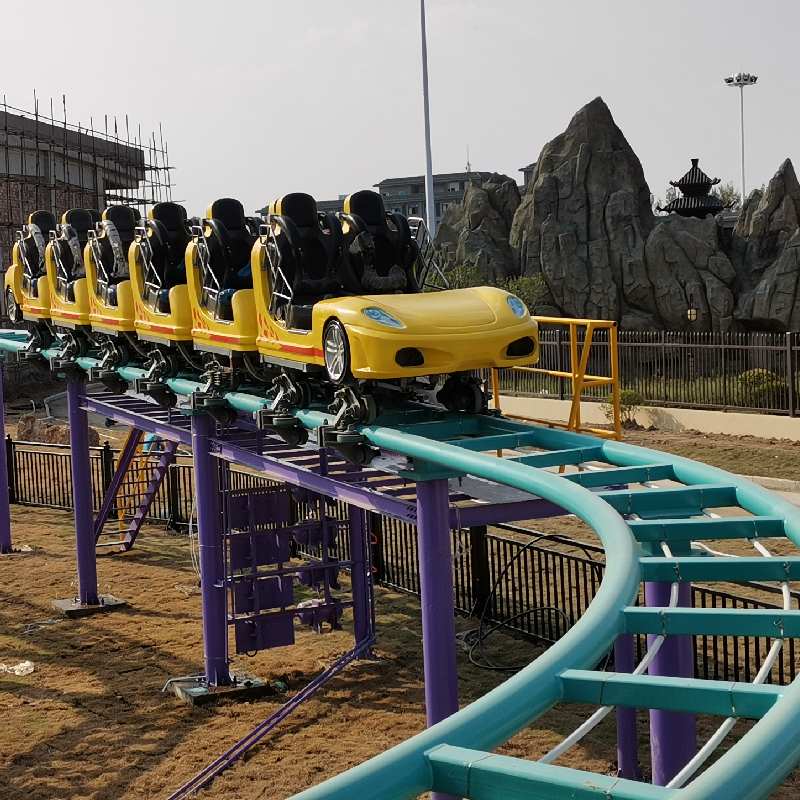- Albanian
- Arabic
- Belarusian
- Bengali
- Czech
- English
- French
- German
- Hebrew
- Hungarian
- Indonesian
- irish
- Italian
- Japanese
- kazakh
- Persian
- Russian
- Thai
- Uzbek
- Vietnamese
Feb . 16, 2025 11:29
Back to list
Baoshijie Roller Coaster
Roller coasters have been a cornerstone of amusement parks since their inception, offering an adrenaline-fueled experience that captivates thrill-seekers worldwide. Understanding the different types of roller coasters can enhance your knowledge, appreciate their engineering marvels, and choose the perfect ride for your experience level. Here, we examine various roller coaster types, emphasizing their unique characteristics and the experiences they offer.
Launch coasters depart from the conventional chain lift mechanisms, instead utilizing powerful motors for immediate acceleration. Whether launching riders forward or backward, the intensity of a sudden, powerful takeoff is unmatched. Rides like “Top Thrill Dragster” exemplify hydraulic launches pushing trains to dizzying speeds within seconds. The combination of rapid acceleration and breathtaking heights makes launch coasters a must for adrenaline enthusiasts seeking an unparalleled burst of excitement. Spinning coasters capture thrill-seekers through unpredictability as the cars rotate freely or in a controlled pattern while navigating the track. This dynamic introduces a new layer of excitement, as riders experience different perspectives and sensations each time. “Sierra Sidewinder” at Knott's Berry Farm showcases this concept perfectly, with rotations occurring naturally due to rider distribution and gravitational forces. Spinning elements transform ordinary drops and turns into multifaceted experiences. Flying coasters further redefine the coaster encounter by positioning riders horizontally, akin to Superman gliding through the skies. The “Tatsu” at Six Flags Magic Mountain exemplifies this genre, creating the illusion of aerobatic plunges and graceful sweeps. The perspective shift establishes a unique thrill as riders experience skyward hang time and swooping dives, all while securely harnessed in a comfortable face-down position. Beyond these traditional types, hybrid coasters have emerged, marrying both wooden and steel elements to craft coasters that fuse rustic charm with modern innovation. Rides like “Steel Vengeance” at Cedar Point merge the classic wooden framework with twisted steel tracks, offering remarkable durability and smoother, more dynamic rides. This innovation broadens the appeal, catering to both enthusiasts of classical coaster design and those seeking contemporary features. Understanding these roller coaster types allows you to appreciate the intricacies and engineering feats behind each design. Whether a serene yet bumpy ride on a wooden coaster or a high-speed launch into the clouds on a steel track, roller coasters offer diverse thrills tailored to various preferences and bravery levels. Each type represents a distinct chapter in the broader adventure of roller coaster experiences, inviting fans to explore, conquer, and enjoy.


Launch coasters depart from the conventional chain lift mechanisms, instead utilizing powerful motors for immediate acceleration. Whether launching riders forward or backward, the intensity of a sudden, powerful takeoff is unmatched. Rides like “Top Thrill Dragster” exemplify hydraulic launches pushing trains to dizzying speeds within seconds. The combination of rapid acceleration and breathtaking heights makes launch coasters a must for adrenaline enthusiasts seeking an unparalleled burst of excitement. Spinning coasters capture thrill-seekers through unpredictability as the cars rotate freely or in a controlled pattern while navigating the track. This dynamic introduces a new layer of excitement, as riders experience different perspectives and sensations each time. “Sierra Sidewinder” at Knott's Berry Farm showcases this concept perfectly, with rotations occurring naturally due to rider distribution and gravitational forces. Spinning elements transform ordinary drops and turns into multifaceted experiences. Flying coasters further redefine the coaster encounter by positioning riders horizontally, akin to Superman gliding through the skies. The “Tatsu” at Six Flags Magic Mountain exemplifies this genre, creating the illusion of aerobatic plunges and graceful sweeps. The perspective shift establishes a unique thrill as riders experience skyward hang time and swooping dives, all while securely harnessed in a comfortable face-down position. Beyond these traditional types, hybrid coasters have emerged, marrying both wooden and steel elements to craft coasters that fuse rustic charm with modern innovation. Rides like “Steel Vengeance” at Cedar Point merge the classic wooden framework with twisted steel tracks, offering remarkable durability and smoother, more dynamic rides. This innovation broadens the appeal, catering to both enthusiasts of classical coaster design and those seeking contemporary features. Understanding these roller coaster types allows you to appreciate the intricacies and engineering feats behind each design. Whether a serene yet bumpy ride on a wooden coaster or a high-speed launch into the clouds on a steel track, roller coasters offer diverse thrills tailored to various preferences and bravery levels. Each type represents a distinct chapter in the broader adventure of roller coaster experiences, inviting fans to explore, conquer, and enjoy.
Next:
Latest news
-
Flume Ride-Hebei Zhipao Amusement Equipment Manufacturing Co., Ltd.|Thrilling Water Attraction&Customizable DesignJul.30,2025
-
Flume Ride - Hebei Zhipao Amusement Equipment | Water Coaster, Thrilling DescentJul.30,2025
-
Flume Ride - Hebei Zhipao | Thrilling Water AttractionJul.30,2025
-
Flume Ride: Thrilling Water Attraction by Hebei Zhipao|Log Flume Manufacturers&Flume Ride DesignJul.30,2025
-
Flume Ride-Hebei Zhipao Amusement Equipment Manufacturing Co., Ltd.|Thrilling Water Coaster, Safe DesignJul.30,2025
-
Flume Ride-Hebei Zhipao Amusement Equipment Manufacturing Co., Ltd.|Thrilling Water Attraction, Safe DesignJul.30,2025
